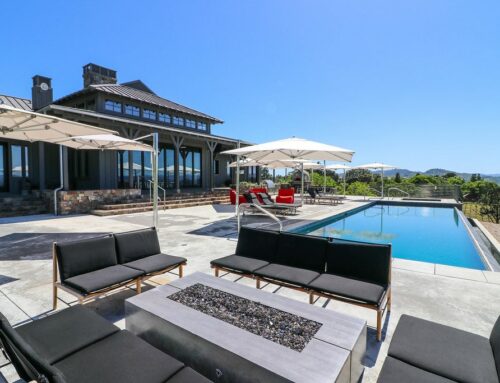At Annadel Builders Inc., we are deeply committed to using green building techniques and designing finely crafted sustainable homes. We believe in improving the environment of our employees, our clients, and our community through our work as builders. As part of this mission, we strive to craft homes that are energy efficient and environmentally conscious. Here are some of the main factors we consider important in an energy efficient home.
- Site Selection – The best site for an energy efficient home will feature unobstructed sunlight, minimal exposure to weather, and flat building-site topography. Ideally, it should be a reasonable distance from your work and the nearest grocery store to cut down on travel emissions. Consider having a solar energy contractor analyze the plot for solar access.
- Begin with a Smart Design – The first step in building an energy efficient home starts with a careful design. Consider all possible design parameters before construction begins. Reduce energy expenditures by choosing designs that utilize smaller, simpler shapes, and include a solar shading strategy in the initial planning. Orient buildings with seasonal passive heating and cooling in mind. Direct solar panels southward when possible, and make sure the roof design includes sufficient, unobstructed roof area for paneling.
- Super-Seal the Building Envelope – Much like a wool blanket, the building envelope of a home is a simple, surrounding layer that insulates it from ambient temperature. Whether the temperature outside is warm or cold, a building envelope helps a home resist internal temperature change. Because of this, one of the best ways to reduce heating and cooling system use is simply maintaining an air-tight and, as far as possible, continuous building envelope. Predictably, this requires identifying and sealing gaps and joints within the structural sheathing. Look to reduce air barrier penetrations as thoroughly as possible, and carefully seal those that do exist at windows, doors, electrical boxes, etc. Explore different sealing materials and make sure that both outer and inner walls have been properly sealed. Finally, test the home’s airtight level by measuring the volume of air changes per hour at 50 Pascals (ACH50) of pressure using a blower door test. A typical goal for a zero-energy home is between 0.6 and 2.
- Establish an Energy Efficient Fresh Air Supply – Unfortunately, the natural consequence of a well-sealed home is that fresh air flow is minimal, demanding a good ventilation system. Use energy efficient heat recovery ventilators or energy recovery ventilators, which retain 70-90% of the heat from discharged air and return it to incoming air.
- Heat Water Wisely – After space heating and cooling, water heating methods hold the greatest potential for improved efficiency. Water heater efficiency is measured by the percentage of fuel converted to useful heat and is expressed by an energy factor (EF) decimal. Most gas water heaters have energy factors from 0.5 to 0.7, while electric models range from 0.75 to 0.95 efficiency. To minimize hot water use, install water-saving faucets and shower heads. In addition, shop for specialty appliances such as dishwashers and washer-dryers that use hot water sparingly. Consider solar water heating or heat pump water heaters with an EF rating between 2.0 and 3.0.
- Insulate Doors and Windows – A big factor in overall heat loss is window area. While balancing your home’s need for natural lighting, try to decrease the overall window-to-floor area of your home by reducing both the number and size of windows. Look for windows with smaller frame profiles and try to install as many as possible facing south. Consider triple pane, inert gas-fill windows with low-emissivity coatings for the least amount of heat transfer. Finally, install insulated fiberglass doors with tight gaskets and air seals. As far as it is possible, minimize glazing on doors as this can be a source of air leakage. Consider a multipoint latching mechanism to hold the door tight against weather-stripping.
- Install Energy Efficient Lighting – Finally, design lighting with energy efficiency in mind. Try to maximize natural lighting by installing windows in the main living areas along south-facing walls. Strategically place task lighting in work areas and as select accenting, avoiding whole room lighting when possible. Avoid recessed lights and replace filament bulbs with LED lighting.
Annadel Builders, Inc. is Wine Country’s premier luxury home builders. We are green builders with a passion for protecting our environment and making our community better. Call to learn more about our sustainable building practices or to speak with our team about your custom home building project in Northern California.




